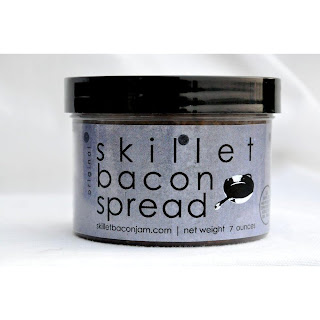(these are actual firemen who eat Creamy Bacon Cheddar Dip..
honest..
told you there would be lickable pics)
Hot & Creamy Bacon Cheddar Dip
(posted by June of Doug & June fame)
I have a nickname for this recipe: "crack cheese" because it is! I keep looking for the amount of crack to add...hmmm... People go crazy over this (even the relatively sane ones). It may not be the most complex, beautiful, or unusual dip, to be sure. But for ease of preparation and bacon appeal, it gets five stars. It's a heart-attack special, but hell fire! Who cares....you are going to die anyways and at least you'll die with a smile on your greasy little face!
Who could hate anything with Hot, Creamy and Bacon in the name? I smell sex and bacon here..Who's that lounging in my chair? Who's that casting devious stares in my direction (wanting to eat my dip..mind out of the gutter for a brief moment, please) ? Mama..this surely is a dream, oh yeah!
I would really like to ascribe an authentic recipe inventor to this..wasn't me..but so damn many people claim their Aunt Emma made in back in 02, or dad made this every time he went to the track and won, or grandma made it every time she drunk too much elderberry wine...so alas, the true genius behind this recipe is an enigma...like the Riddle of the Sphynx, but not so literary, esoteric or orphic- start googling...I am here to expand not just your ass but your mind too.
look healthy..kind of
8 ounces cream cheese, softened
2 cups Sour Cream
1/2 lb of crisp cooked bacon crumbled (You can use double the bacon, after all some people love bacon more than life itself..can there ever be too much bacon for Doug???)
2 cups shredded Cheddar cheese (feel free to use Swiss or a combo of both)
1 cup chopped green onion (scallions to some of us, use the bulb and green top)
Preheat the oven to 400 degrees. In a bowl, combine all ingredients. Place the mixture in a 1-quart baking dish. Cover. Heat the dip for 25-30 minutes or until hot. Crumble some more cooked crispy bacon as a garnish. Serve with assorted fresh vegetables, crackers and/or chips (Lay's are Doug's chip of choice..mine is Wise) or just a big spoon. I am thinking this might be yummy on baked potatoes.
{Could add a dash of hot pepper sauce or maybe some chopped artichoke hearts to be fancy - but it's great as-is.. someone has described this as spinach artichoke dip with the healthy stuff removed...so be it, who am I to argue?}
*Serving option: Dip may also be placed in hollowed round sourdough loaf, wrapped in foil and heated in 400 degree oven for 30 minutes.
And if you MUST..Make it in the microwave, cook it for 2 minutes to start and 3 minutes to finish, it was perfect just that way.
This dip really was good. As it should be, since it contains some of the usual
suspects: cheese and bacon. If you're hosting a party, this
would be a great addition! You might even consider doubling it. There were only 12
people eating this (with great gusto may I add), and we could have easily handled an extra round of this
dip.
Now I have heard some people comment that this can be made "healthier". REALLY???? (And I "could" paint the Sistine Chaple also...but I highly don't recommend it unless you lke cartoon bunnies and bears and flowers..which is all you really need to learn to draw when you have kids..in another blog I will share my aforementioned artwork with you- just remember it's all copywrited in the unlikely event that someone would steal it and claim it as their own..as Mr. Morrison {and I} sing, "People are Strange").
I personally believe moderation is the key here...if and only IF you are trying to be healthy, use the recipe guidelines for a serving....this makes 15 (yeah right)..so if you eat 1/15th of this ..calories are a paltry 190. If you eat the entire bowl..you risk consuming 2850 calories...to put it into better perspective a McDonald's Double Quarter Pounder with Cheese is 750 calories, large fries are 540 calories and large Coke is 310 calories ..a total of 1600 calories add a hot fudge sundae with nuts and not only do you have a stomache ache ..you have consumed an additional 330 calories to bring you up to 1930. (However if you move uptown to Wendy's Baconator (don't aske me who named this?? maybe Doug or a Doug like man) at a very sweet 970 calories, some chili cheese fries at 540 calories, and a large chocolate frosty for 600 calories ..you have inhaled 2140 calories). {The calorie counts I got were from the McDonald's and Wendy's websites..are are suspect, I believe...Just because I am paranoid, doesnt mean I am wrong!!!}
Now, I don't have my own picture yet, and the next time I make this...has to be an occasion...like Canada Day..I will post my ever lickable picture..of the dip of course (mind out of the gutter once again please)!
(not my pic but a nice one)































